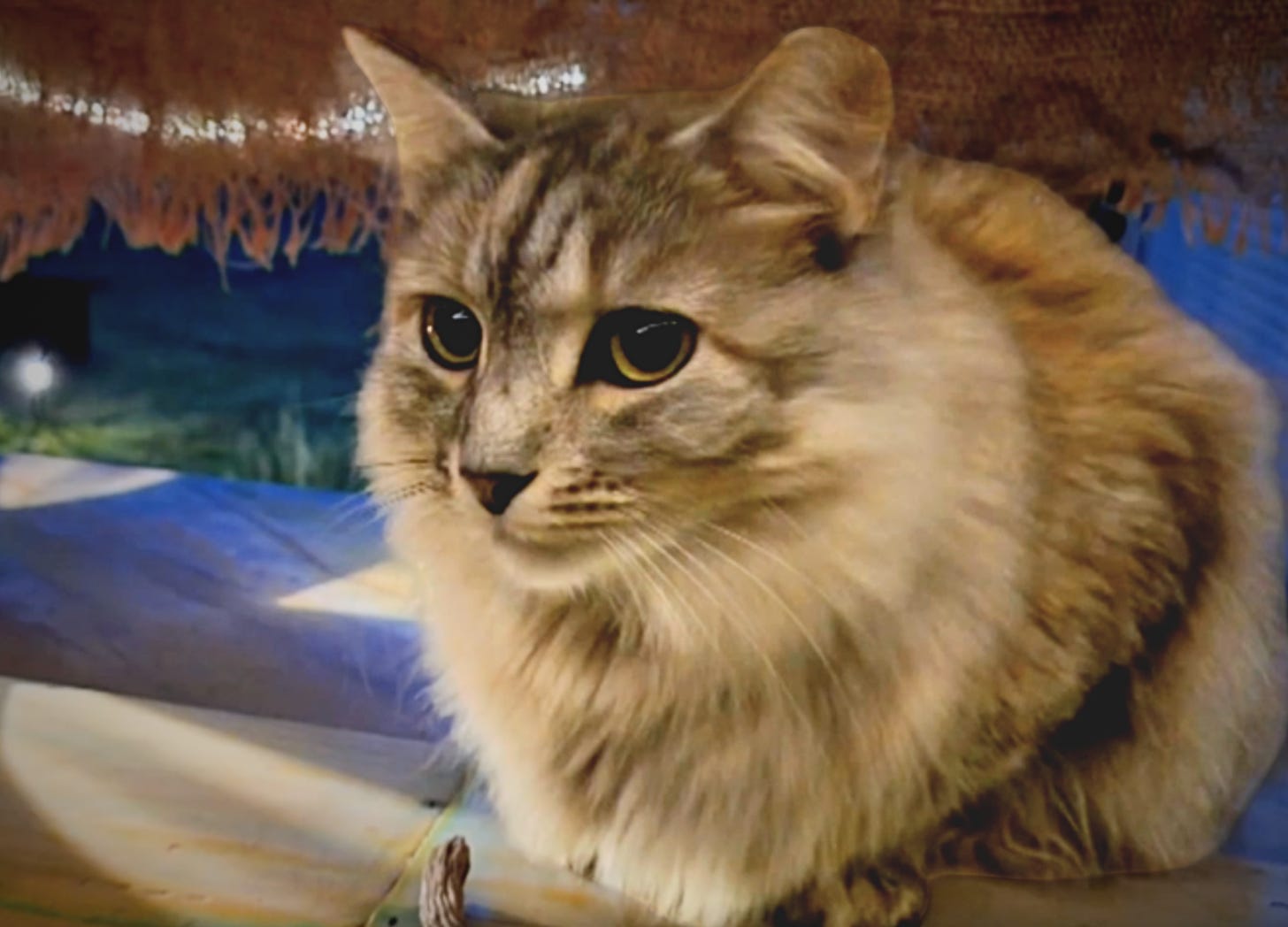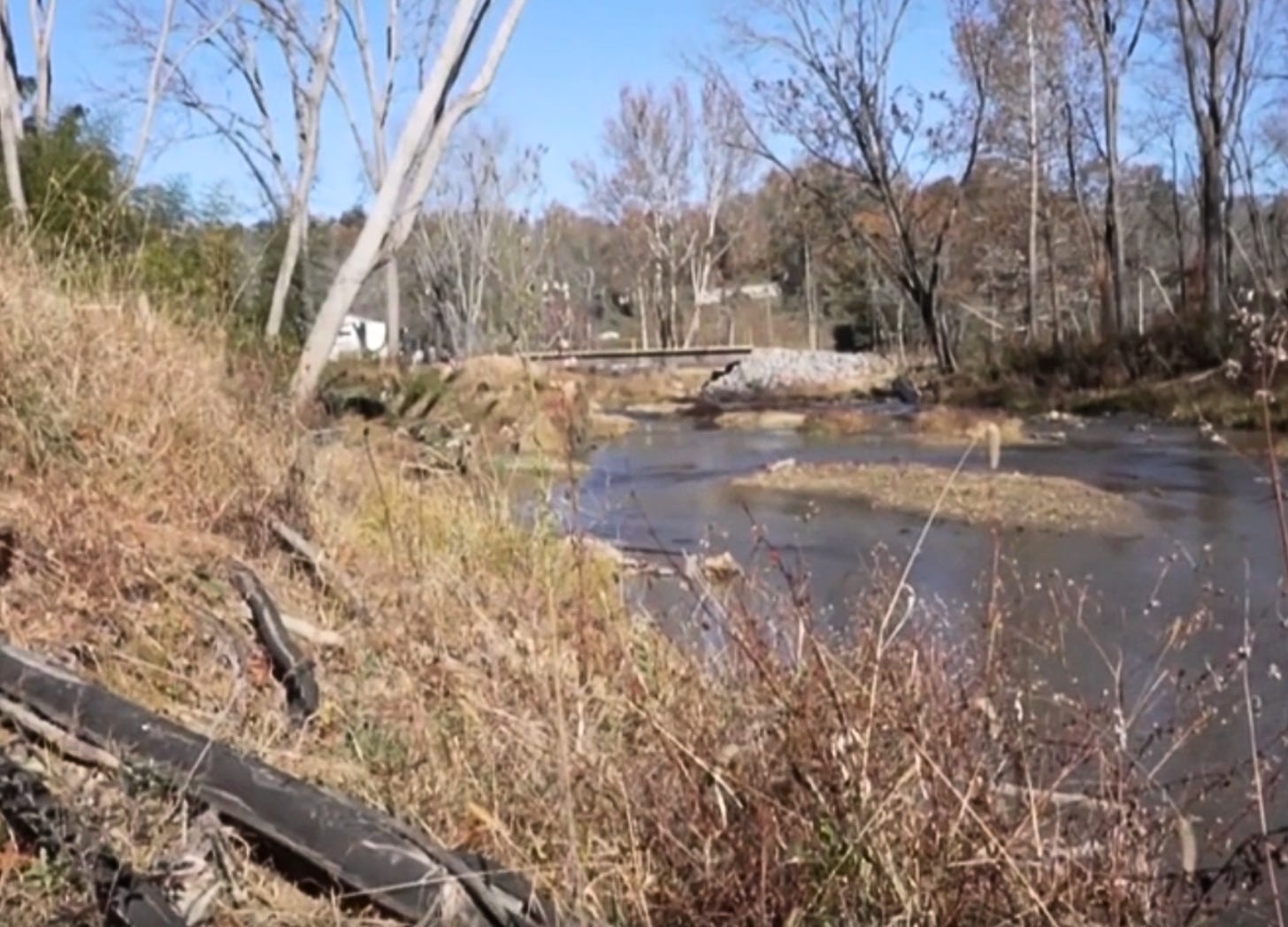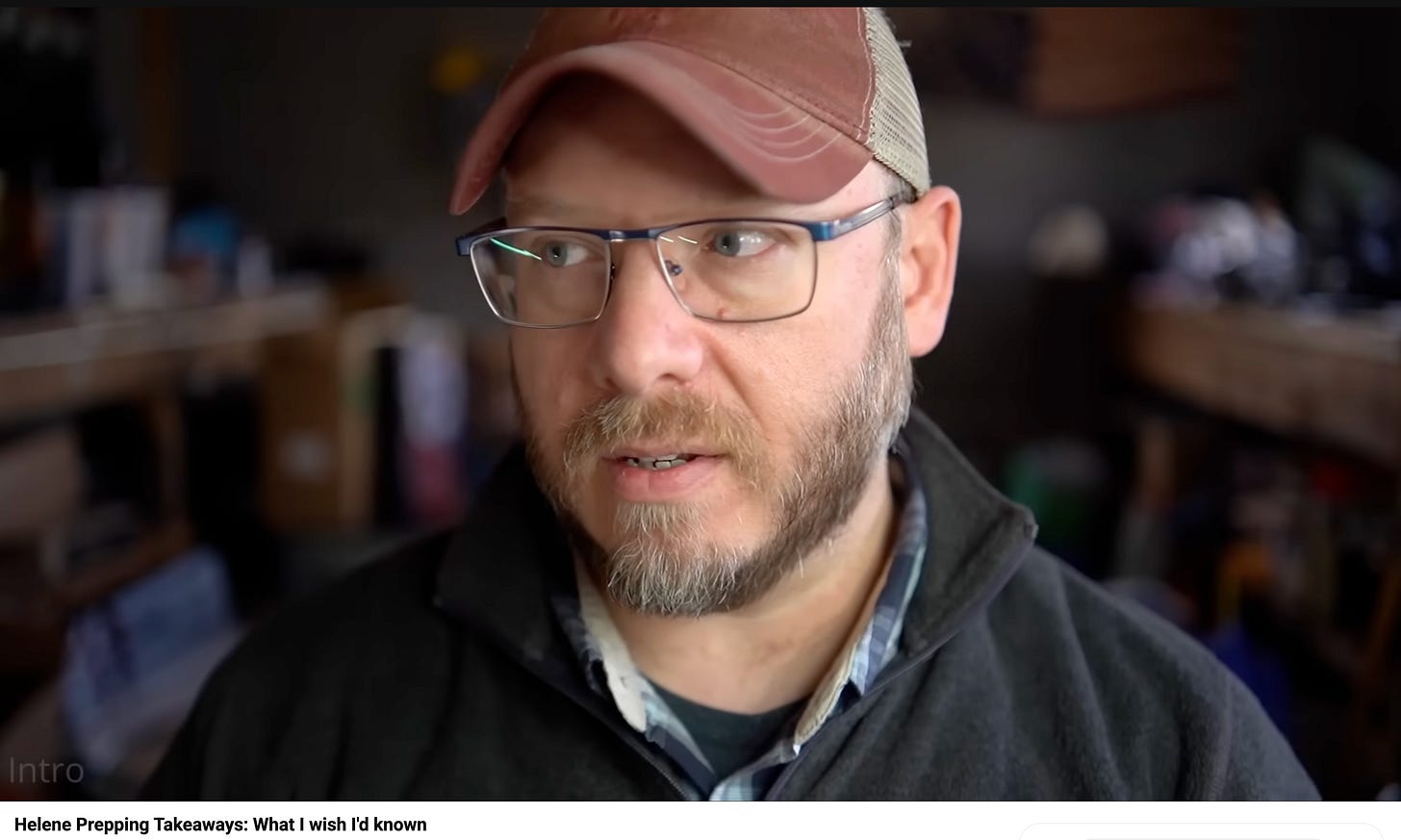The Cat Who Came Home And the Warning She Carried
How one small miracle in North Carolina opened a door to the lessons every American (and the world) needs now.
This week a story out of North Carolina got my attention.
A couple in Asheville lost everything during Hurricane Helene last year. They had even said goodbyes to each other, and were lucky to be alive. Yet in the disaster, they lost their cat, Bootsy.
For a year, they had walked their property daily and there had never been any sign of her.
Then last week—a year later—against all odds, Bootsy walked back into their lives.
(Image: Bootsy the cat. Credit: KameraOne)
She most likely been stranded across a stream and returned home by crossing a nearby bridge that had been destroyed in the storm and had only just been rebuilt.
(Image: The newly built bridge that Bootsy likely crossed to return home. Credit: KameraOne)
Her owner, Jackie, said it best:
“Her coming back is really… we feel like it’s a sign of hope. Maybe things are going to turn around for us.”
(Image: Bootsy’s owners. Credit: KameraOne)
Jackie’s sentence stuck with me. Not because it’s sentimental, but because it reminded me of something I’ve been watching closely since Helene hit: what survivors learned, what they wish the rest of the country understood, and why these lessons matter far beyond North Carolina.
Bootsy coming home wasn’t just a sweet moment. It was a reminder to revisit what this storm revealed, and what very few headlines ever captured.
What Helene Survivors Want the Rest of Us to Understand
The most powerful account I’ve seen comes from a man named Max Cooper who survived Helene with his wife and child in Asheville. His story is long, raw, and unfiltered, but the pattern that comes out of it is unmistakable.
(Image: Max’s advice on his YouTube channel, Gribley)
Max’s advice is summarized here:
1. “You have to be responsible for yourself.”
Before Helene even arrived, Asheville was already flooding from a predecessor rain event. Hours later, when the storm actually hit, the systems people rely on simply collapsed.
Power failed.
Internet died.
Cell towers went down.
911 calls returned nothing but static.
An emergency alert warned of a dam failure, but without naming the dam.
Max summed up what that felt like:
“You have to be responsible for yourself. No one else is going to do it for you.”
He said many lives were lost because warnings didn’t get through, and others because people didn’t trust their own instincts:
“The feeling in your gut… when that says go, you need to go.”
This wasn’t coming from an expert. It was coming from someone who lived through the confusion, disbelief, and sudden realization that help wouldn’t — and couldn’t — arrive quickly.
2. “Help will come… but not fast, and not everywhere.”
Max described how Asheville’s water system had been upgraded in 2004 and engineered to survive almost anything:
reinforced steel
buried 35 feet underground
expanded after the 2004 floods
But Helene obliterated it anyway.
FEMA had to dig a well under the hospital to keep it operating.
Power was out for days.
Water was unsafe for 54 days.
People went to sleep believing the worst was over, not knowing entire towns were gone.
Most people don’t realize that this storm didn’t overwhelm a weak region, it overwhelmed a prepared one.
3. “Your community becomes the infrastructure.”
One morning, as Max and his family were still without power and unable to call 911, a neighbor’s home erupted in flames. Max froze. “I panicked,” he said.
A neighbor evacuating her children suddenly remembered the emergency broadcast message:
“You can still text 911.”
Fire trucks arrived because that community member remembered that one simple detail that mattered in that moment.
Like other survivors, Max tells more stories of community strength in his video testimony and stressed this is not a cliche when he says:
“Community is everything.”
4. “Most disasters don’t look like disasters at first.”
This is the part survivors are begging the rest of us to understand.
During the worst moments of Helene:
the sky was blue in places
some roads looked clear
people drove around thinking the danger had passed
Meanwhile:
bridges were collapsing
communication was dead
entire towns were under water
bodies were in the trees
Disaster didn’t announce itself. It arrived looking like everyday life, until suddenly it was upon them.
5. “If it can happen here, it can happen anywhere.”
Most Americans expect disasters to be in Florida or Texas.
Asheville, North Carolina, isn’t a coastal city. It’s 2,000 feet above sea level, tucked into the mountains. Most people had never imagined a hurricane could reach them with this kind of force. But it did.
Max said:
“If you were under that cloud, you’re a survivor… People who live inland don’t think it can be them, until it is.”
Helene rewrote people’s assumptions about where disaster can strike.
The Calm Rebellion
When the helicopters disappeared, when the warnings failed, when the water stopped running, when communication died, people weren’t saved by institutions. They were saved by:
the neighbor who remembered how to reach 911
the stranger who brought buckets of water
the nurse who held a crying man in the rain
the instinct that said “leave now”
the emotional steadiness to keep thinking even when everything was falling apart
Calm was a survival tool, a mental clarity that allowed people to:
notice the danger early
remember basic facts that others forgot
act before panic froze them
help others when systems failed
stay present enough to make the next right choice
Calm is not passive. Calm is how ordinary people become the infrastructure when the real one breaks.
In this week’s Members-Only Post, I break down what happens to your brain in a crisis, why most people freeze, and how Amanda Ripley’s advice in The Unthinkable can help you stay clear-headed when others panic. I’ve also included a simple, one-page emergency plan you can customize in minutes.
THE PANIC POINT: Why Good People Make Bad Decisions in a Crisis
When Hurricane Helene hit North Carolina, something stood out in every survivor’s testimony: not the storm itself, but the moment their brain stopped working the way it normally does.
Bootsy the cat’s return was a small thing. But small things can sometimes be the greatest signs of hope.
And hope doesn’t appear from nowhere. It grows in places where people stay present, grounded, and human. That’s what the survivors of Helene showed us. And it’s something every community needs.
Share your thoughts. Comments are open to all! Click below and join the discussion.
Until next week, stay calm, stay human.
~ Kay








